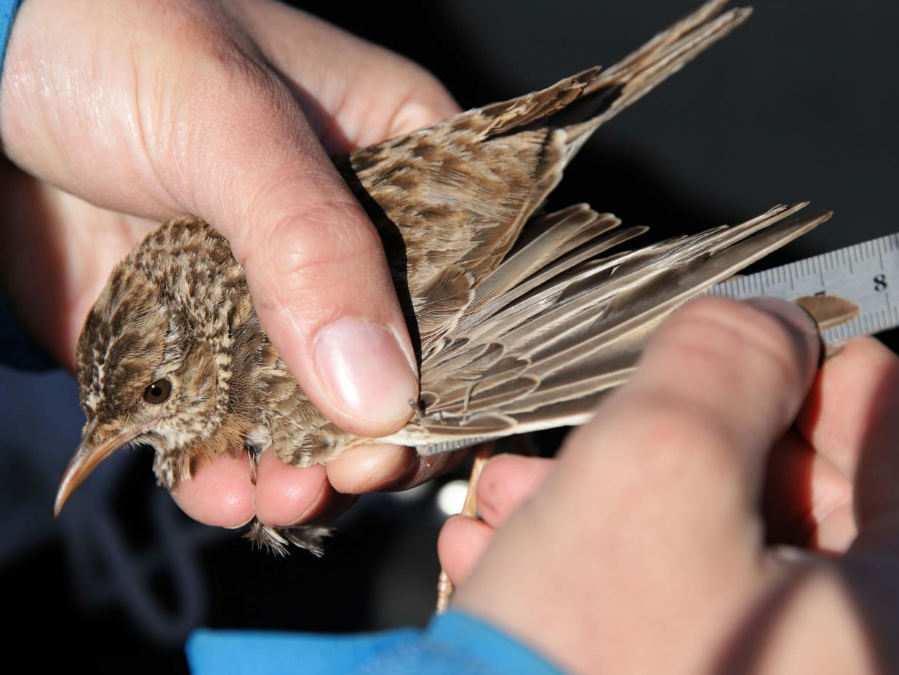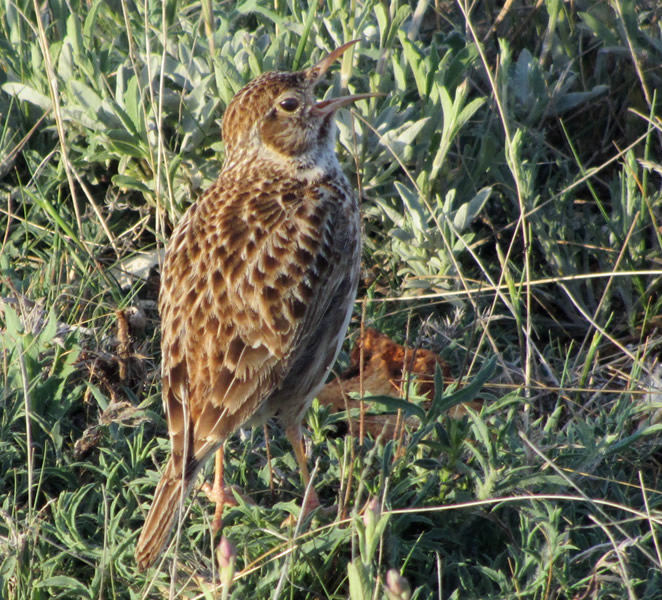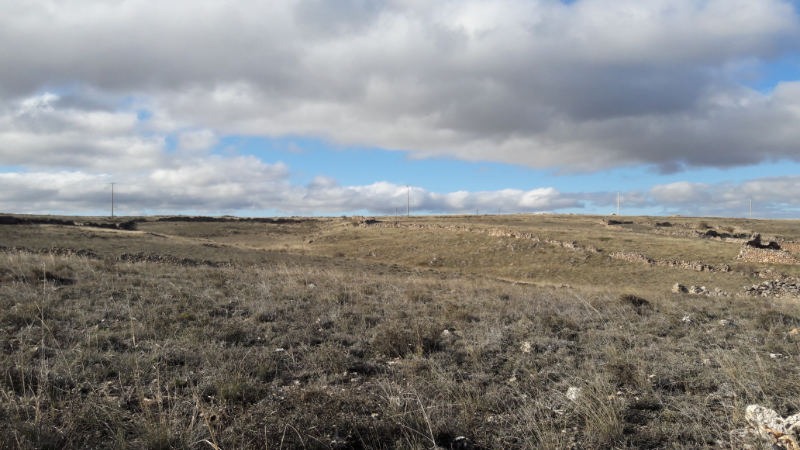Identification
Identification

Dupont’s lark (Chersophilus duponti), Spanish: Alondra ricotí/ Catalan: Alosa becuda/ Galician: Calandra de Dupont/ Basque: Dupont hegatxabala/ Portuguese: Portugal-lopirripioa/ English: Dupont’s lark.
Small and stylized passerine belonging to the Alaudidae family, 18 cm long and between 26 and 31 cm wingspan. Plumage similar to that of other Alaudidae, cryptic, with ochre and grayish tones and fine black stripes. Its most distinctive morphological feature is the bill, curved and long, which can exceed 2 cm in length in males. Difficult to observe in the field, as it shows a very elusive and hidden behavior. It is usually hidden among the low bushes, moving stealthily on foot, with hardly any flight. Only at dawn, it is more active, making singing flights in the dark. Very characteristic and monotonous song, very different from the rest of the aludids.
Average body mass, 40.2 g in males and 36.2 g in females.
Voice
Characteristic song. Repetitive, melodic and brief song, very different from the rest of the Iberian aláudidos, emitted from the ground or, especially at dawn, in flight. It is composed of several sequences (from 3 to 11 per individual). The last one is the most common and corresponds to the territorial call, a short and modulated whistle with a long ending: ‘too-see’ or even with three syllables ‘dzee-too-seei’. The alarm song is emitted in situation of territorial intrusion: ‘dweej-dweej’. High inter-population variability and even between individuals of the same population.


Geographic variation
Two subspecies of Dupont’s lark are distinguished, Chersophilus duponti duponti and Chersophilus duponti margaritae. The nominal subspecies is distributed in the Iberian Peninsula, Morocco, northern Algeria and northwestern Tunisia; the subspecies C. d. margaritae, in southern Algeria and Tunisia, as well as in northern Libya and Egypt.

